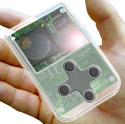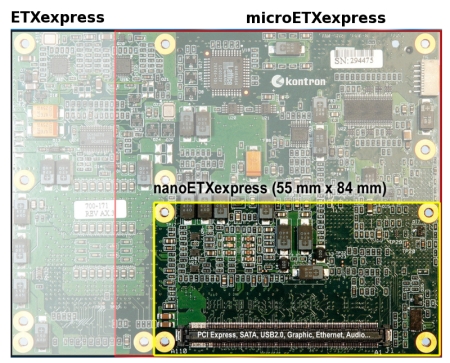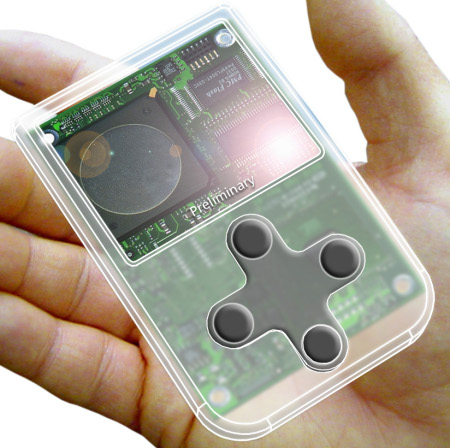Credit-card sized COM module unveiled
Dec 21, 2007 — by Eric Brown — from the LinuxDevices Archive — 5 views Kontron has announced the first board in its newly proposed “nanoETXexpress” standard for CPU modules. The nanoETXexpress-VX8 is based on a mysterious new highly integrated x86-compatible chip(set), measures 2.16 x 3.3 inches (55 x 84 mm), and targets hand-held medical and data devices, Kontron said.
Kontron has announced the first board in its newly proposed “nanoETXexpress” standard for CPU modules. The nanoETXexpress-VX8 is based on a mysterious new highly integrated x86-compatible chip(set), measures 2.16 x 3.3 inches (55 x 84 mm), and targets hand-held medical and data devices, Kontron said.
Kontron proposed nanoETXexpress this July. The form factor is 39 percent the size of the PICMG (PCI Industrial Computer Manufacturers Group) COM Express standard, which was also originally proposed by Kontron, and also quite a bit smaller than the microETXexpress form factor launched this summer.

The nanoETXexpress format shares the same basic design with other COM Express modules
(Click to enlarge)
Kontron's newly announced nanoETXexpress-VX8 aims to offer high-end graphics and low power consumption in a format suitable for mobile devices, the vendor said. It is based on an unnamed “highly integrated chipset” from an unnamed silicon vendor. From the obscured graphic below, it would appear that the chipset comprises only a single chip.

nanoETXexpress-VX8
(Click to enlarge)
Via has long planned to bring out a single-chip part in its CoreFusion line. Codenamed “John,” the processor will integrate CPU, northbridge, and southbridge into a single x86-compatible SoC (system-on-chip).
Competitor Intel, meanwhile, is reportedly working on a similar Pentium M-based Tolapai SoC.
For its part, Kontron said it plans to use processors from various vendors in its nanoETXexpress modules.
According to Kontron, the nanoETXexpress-VX8's unnamed processor will clock up to 1.5GHz, have a 400MHz frontside bus speed, and support up to 1GB of DDR2 RAM. The integrated graphics processor is said to offer accelerated MPEG2 decoding, and to boast dual-channel 18/24 Bit LVDS.
The module is equipped with a Gigabit Ethernet interface, a PCI Express x1 lane, and two Serial ATA II ports. The board is designed according to the pin definitions of the COM Express spec, says Kontron, with the two SATA interfaces in accordance with the PICMG COM.0 specification. Potential device targets are medical hand-held devices and mobile data products.
More about ETXexpress
All of Kontron's ETX form factors define the dimensions, connectors, and pin-outs for “CPU modules.” The modules lack real-world I/O, such as RJ-45 jacks and dsub-9 connectors. Instead, they are designed to mate with a custom carrier board supplied by the customer according to their I/O needs. Designing carriers boards is much easier than designing a whole single-board computer, the reasoning goes.
In 2003, Kontron's initial ETXexpress version of its COM Express technology was formally adopted by PICMG as the PICMG COM Express. This was followed by Kontron's even smaller microETXexpress format, released in 2006. The new nanoETXexpress module shares the same baseboard interface connector design and pinout as the first two formats, with overlapping mechanical assemblies, as shown above. Their footprints vary:
- COM Express (ETXexpress):
- basic form-factor — 125 mm x 95 mm (4.9 x 3.7 inches)
- extended form-factor — 155 mm x 110 mm (6.1 x 4.33 inches:
- microETXexpress — 95 x 95 mm (3.7 x 3.7 inches)
- nanoETXexpress — 55 x 84 mm (2.16 x 3.3 inches)
Via Technologies, meanwhile, offers it own ITX line of steadily shrinking embedded modules that can be considered as competitors to Kontron's COM Express. However, unlike ETX, the similarly named ITX boards do have real-world I/O connectors, and are designed for standalone use.
Starting with the popular mini-ITX (6.7 x 6.7 in.) motherboard standard, Via has moved on to introducing the nano-ITX (4.7 x 4.7 in.), followed by the pico-ITX (3.9 x 2.8 in.), and mobile-ITX (3.0 x 1.8 in).
Availability
Kontron did not provide details on the availability or pricing of the nanoETXexpress-VX8, but said that software support would include Linux, VxWorks, and Windows XP, XPe, and CE.
This article was originally published on LinuxDevices.com and has been donated to the open source community by QuinStreet Inc. Please visit LinuxToday.com for up-to-date news and articles about Linux and open source.